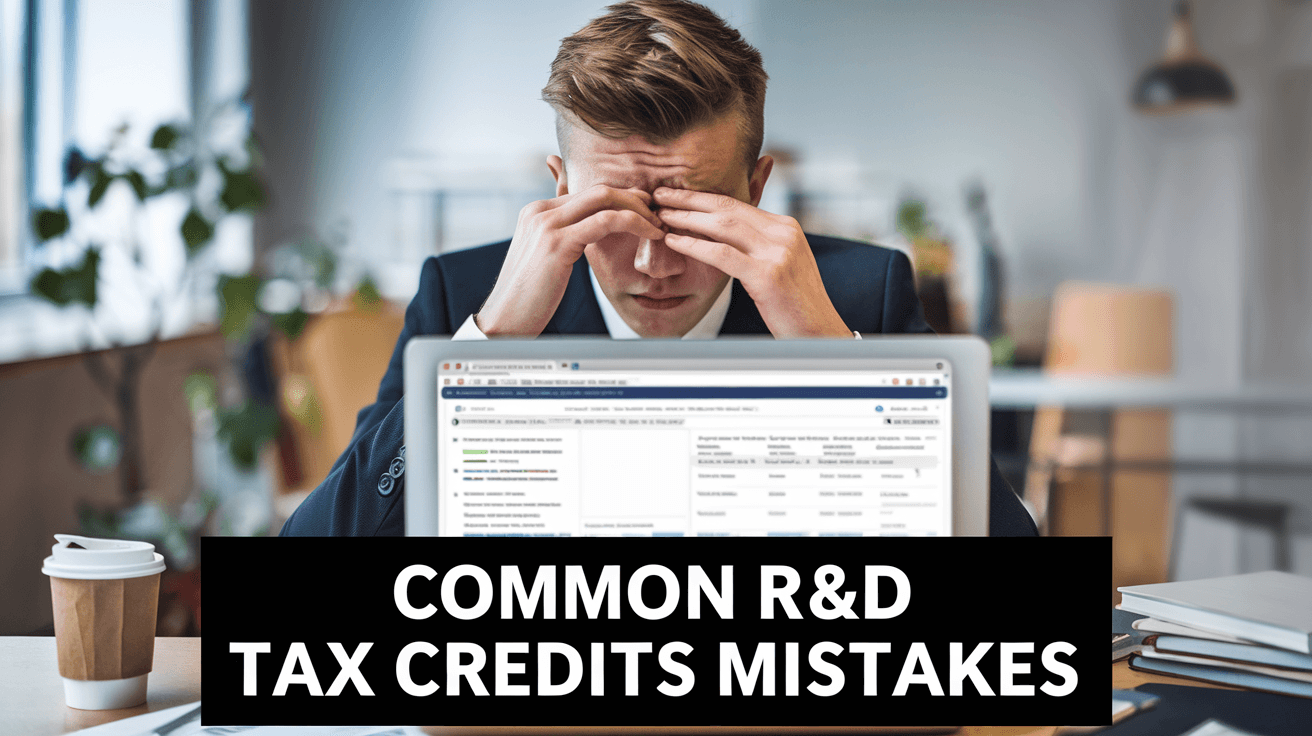R&D Tax Credits Baillieston Glasgow
R&D tax credits in Baillieston, Glasgow, are a valuable tax relief provided by the UK government to encourage and reward companies for their innovative activities. These credits allow businesses to reclaim a significant portion of their research and development expenditure, helping to drive innovation and technological advancement.
To be eligible, your company must be a UK limited company subject to Corporation Tax and must have carried out qualifying research and development activities. These activities include developing new products, processes, or services, or improving existing ones, and must involve resolving scientific or technological uncertainties. Companies of all sizes, from startups to larger enterprises, can claim R&D tax credits, provided they meet the eligibility criteria.
R&D tax credits can significantly benefit Baillieston businesses by providing a monetary reward for innovation and entrepreneurship. For example, SMEs can claim up to 33.35% of their eligible expenditure back as a refundable tax relief, while larger companies can claim a taxable credit of 20% under the RDEC scheme. This relief can be claimed even if the project did not succeed, making it a valuable source of funding for companies to reinvest in their business and gain a competitive edge in innovation.

How Do R&D Tax Credits Benefit Baillieston Businesses?
R&D tax credits can significantly benefit Baillieston businesses by providing a monetary reward for innovation and entrepreneurship, allowing companies to reclaim a substantial portion of their research and development expenditures. This incentive encourages businesses to invest in projects that resolve scientific or technological uncertainties, driving progress and innovation.
Financial Advantages
R&D tax credits offer Baillieston businesses a financial boost by allowing them to claim up to 33.35% of their eligible R&D expenditure as a refundable tax relief.
This relief can be claimed even if the project did not succeed, making it a valuable source of funding for companies to reinvest in their business.
Competitive Edge in Innovation
By claiming R&D tax credits, Baillieston businesses can gain a competitive edge in innovation. The credits support companies in developing new products, processes, and services, or improving existing ones, which helps them stay ahead in their respective industries.
This incentive is available across various sectors, including healthcare, software development, manufacturing, and more, ensuring that businesses in Baillieston can drive innovation and technological advancement.

Which Industries Commonly Claim R&D Tax Credits?
Companies across various sectors can claim R&D tax credits, but some industries are more prevalent in doing so. The manufacturing, technology, and life sciences sectors are among the most active in claiming these credits.
Technology Sector
The technology sector, including software development and information and communication technology (ICT), is a significant beneficiary of R&D tax credits. Companies in this sector often engage in projects aimed at advancing computer science or information technology, such as developing new software tools, innovative data capture and protection methods, and testing new software processes.
Manufacturing
The manufacturing sector is the largest claimant of R&D tax credits in the UK. Manufacturing companies frequently work on projects to develop or improve existing products, processes, or materials, and to comply with changing regulatory requirements. This includes product development using computer-aided tools, improving second-generation products, and developing processes to meet increasing regulatory demands.
Life Sciences
The life sciences sector, which includes healthcare, biotechnology, and pharmaceuticals, heavily relies on R&D. Companies in this sector often work on projects such as developing new treatments, testing and creating new product prototypes, and reducing the side effects of pharmaceuticals. The COVID-19 pandemic has also increased R&D activity in this sector, particularly in vaccine research and clinical trials.
Others
Other industries that commonly claim R&D tax credits include engineering, construction, and agriculture. In engineering, companies may work on developing new materials, improving manufacturing systems, and creating bespoke solutions. The construction industry has seen an increase in R&D spending, with companies claiming credits for innovations such as automated systems and new materials. In agriculture, farmers and agricultural businesses can claim credits for developing new machinery, processes to reduce waste, and improving soil formulation.

What Qualifies as R&D Under UK Tax Law?
To qualify for R&D tax relief under UK tax law, your company must be engaged in activities that seek an advance in science or technology by overcoming scientific or technological uncertainties. These activities must be aimed at resolving uncertainties that are not readily deducible by a competent professional in the field.
Qualifying Activities
Qualifying R&D activities include those that aim to develop new or improved products, processes, materials, services, or devices. These activities must be focused on achieving an advance in science or technology, such as developing new technological or scientific processes, or modifying existing ones. This can include work on internal projects, as well as certain work done on client projects. The activities must involve overcoming scientific or technological uncertainties that are not readily available in the public domain or deducible by a competent professional in the field.
For example, HMRC considers activities such as developing information management systems to provide a faster and more efficient workflow, or creating new software, as qualifying R&D activities. Additionally, costs related to staff, subcontractors, materials, and certain software licences can also qualify for R&D tax relief.
Excluded Activities
Activities that do not qualify for R&D tax relief include those that do not involve overcoming scientific or technological uncertainties. This excludes work that is purely routine or does not advance the overall knowledge or capability in a field of science or technology. For instance, activities in the arts, humanities, or social sciences are not eligible. Also, businesses such as care homes, childcare providers, personal trainers, wholesalers, retailers, pubs, and restaurants are unlikely to qualify for R&D tax credits as their activities typically do not involve scientific or technological innovation.

How Are R&D Tax Credits Calculated?
To calculate R&D tax credits, you need to determine whether your business qualifies under the SME R&D Relief scheme or the Research and Development Expenditure Credit (RDEC) scheme, and then apply the relevant rates and rules. The calculation involves enhancing your qualifying R&D expenditure and then applying the appropriate tax credit or deduction.
SME Scheme
For SMEs, HMRC allows businesses to deduct an extra 86% of their qualifying R&D expenditure from their annual profits on their corporation tax bill, effective from 1 April 2023. This means profitable SMEs can claim up to 21.50p of every £1 spent on R&D activities. For example, if you spend £100 on qualifying R&D, your additional uplift would be £86, and with a 25% corporation tax rate, you’d receive £21.50 through R&D Tax Credits.
Loss-making SMEs can surrender their losses in exchange for a cash payment. For expenditure from 1 April 2023, they can claim 186% of their qualifying R&D expenditure, resulting in a 10% credit rate, which translates to £18.60 for every £100 spent on R&D.
RDEC Scheme
The RDEC scheme is primarily for large companies or SMEs that cannot use the SME R&D Relief scheme. From 1 April 2023, the RDEC rate increased from 13% to 20%. This means that for every £100 spent on eligible R&D activity, you receive £20 R&D Expenditure Credit, which, after tax, results in a net benefit of £15. The RDEC is taxable as trading income and reduces your corporation tax liability.

What Are the Recent Changes to UK R&D Tax Credits?
The UK has introduced significant changes to its R&D tax credit system, effective from April 1, 2024, aimed at simplifying the process and reducing fraud. These changes include the merger of the SME and RDEC schemes into a single scheme and the introduction of a new rate for R&D-intensive SMEs.
Policy Updates
- R&D Tax Credit Rates: The merged scheme now has a single rate of 20% above-the-line credit for all qualifying R&D expenditure, applicable for accounting periods starting after April 1, 2024.
- SME Intensive Scheme: Loss-making SMEs that spend more than 30% of their total expenditure on R&D can claim a 27% tax credit under the Enhanced R&D Intensive scheme (ERIS).
- Digital Submission: All R&D claims must be submitted online, and additional information, such as a breakdown of expenditure types, must be included to support claims.
- Subcontracting Rules: R&D Tax Credits will now be received by the company conducting the research, rather than the subcontracted company, and overseas costs for externally provided workers are no longer eligible unless it is wholly unreasonable to replicate the conditions in the UK.
- Qualifying Costs: A wider range of cost categories, including pure mathematics and data and cloud computing costs, are now eligible for tax relief.
Impact on Businesses
- Simplified Process: The merger of the SME and RDEC schemes into a single scheme is designed to simplify the R&D tax relief landscape, making it easier for businesses to claim relief.
- Increased Scrutiny: Businesses will face higher scrutiny on their claims, with all claims needing to be supported by a named officer of the company to protect against unauthorised claims.
- Financial Benefits: The new rates mean that businesses can claim a tax credit of 20% of their qualifying R&D expenditure, resulting in a post-tax benefit of between 15% and 16.2% depending on the corporation tax rate.
- R&D Intensity Threshold: SMEs must meet a 30% R&D intensity threshold to qualify for the enhanced intensive scheme, which provides a higher rate of relief.

How Can Baillieston Businesses Apply for R&D Tax Credits?
To apply for R&D tax credits, Baillieston businesses need to identify and document their eligible research and development activities, and then submit a claim to HMRC. This process can be streamlined with the help of specialist R&D tax credit consultancies.
Application Process
- Identify Eligible Activities: Determine if your business is engaged in activities that qualify as research and development. This includes developing new products, services, or processes, or improving existing ones through science and technology.
- Gather Necessary Documentation: Collect all relevant records and documents related to your R&D activities, such as project plans, technical reports, and financial records. This documentation is crucial for supporting your claim.
- Notify HMRC: Under new legislation, companies must notify HMRC of their intention to claim R&D tax relief within a specific timeframe, starting from the beginning of the accounting period and ending six months after the end of the relevant accounting period.
- Prepare and Submit the Claim: Use the gathered documentation to prepare a robust claim. This can be done with the help of R&D tax specialists who can ensure all eligible expenses are properly accounted for and the claim is compliant with HMRC regulations.
- Address Any Queries: In the event of any queries from HMRC, ensure that your consultancy or tax advisor is prepared to represent you and provide necessary clarifications.
Required Documentation
- Project Plans and Technical Reports: Detailed descriptions of the R&D projects, including the objectives, methodologies, and outcomes.
- Financial Records: Documentation of all costs associated with the R&D activities, such as staff costs, software, consumables, and subcontractor fees.
- Advance Notification Form: If required, submit the Advance Notification Form to HMRC within the specified timeframe to notify them of your intention to claim R&D tax relief.
- Corporation Tax Return: Ensure that your R&D tax credit claim is included in your corporation tax return, as this is where the claim will be processed.
By following these steps and ensuring you have the necessary documentation, Baillieston businesses can successfully apply for and benefit from R&D tax credits.

What Common Mistakes Should Be Avoided When Claiming?
When claiming expenses or income on your tax return, it is crucial to avoid mistakes that can lead to penalties, interest, and even legal issues. Here are some key mistakes to watch out for to ensure your tax return is accurate and compliant with HMRC regulations.
Overclaiming
Overclaiming expenses or income can result in significant penalties and interest. For instance, claiming personal expenses as business expenses is a common mistake that can get you in trouble with HMRC. Ensure that you only claim expenses that are wholly and exclusively for trade purposes. If you are unsure, consult with your accountant to confirm the legitimacy of your claims.
Underclaiming
Underclaiming expenses can lead to an unnecessarily high tax bill. It is important to familiarize yourself with the list of allowable expenses and keep clear records of all your business receipts. This includes expenses such as office supplies, travel, and equipment. Not claiming all available deductions can cost you money, so make sure you are aware of all the deductions and credits you are eligible for.
Documentation Errors
Documentation errors can cause substantial issues with your tax return. One common mistake is entering the wrong Unique Taxpayer Reference (UTR) or National Insurance (NI) number. Ensure that these numbers are correct, as HMRC won’t be able to process your return without them. Additionally, failing to include supplementary pages or missing the declaration of all income sources can lead to complications and potential penalties. Keep accurate records and double-check all information before submitting your tax return.

How Can Professional Advice Enhance R&D Tax Credits Claims?
Professional advice can significantly enhance R&D tax credits claims by ensuring that all eligible expenditures are identified and correctly claimed, and by navigating the complex process to maximize the refundable relief. Expert guidance can also help in documenting the scientific or technological uncertainty, which is crucial for a successful claim.
Role of Tax Credit Specialists
R&D Tax Credit Specialists play a crucial role in enhancing your R&D tax credits claims. Here are some key ways they contribute:
- Assessment and Identification: They assess your company’s activities to identify which projects and costs qualify for R&D tax credits, ensuring you do not miss out on any eligible expenditures.
- Documentation and Evidence: Specialists help in documenting the scientific or technological uncertainty and the innovation involved in your projects, providing strong evidence to support your claim.
- Navigating HMRC Regulations: They are well-versed in HMRC’s legislation and can guide you through the complex process, ensuring compliance and maximizing your claim.
- Optimizing Claims: Experts can optimize your R&D expenditure to increase the refundable relief, helping you to reclaim up to 33.35% of your eligible expenditure.
- Streamlining the Process: By handling the claim process, specialists minimize your input, making the entire process easy and stress-free.
Benefits of Expert Guidance
The benefits of seeking expert guidance from R&D Tax Credit Specialists are numerous:
- Increased Refunds: With their expertise, you can secure higher refunds, as they ensure all eligible costs are included and correctly calculated.
- Reduced Risk: Experts help in avoiding common pitfalls and ensuring compliance with HMRC regulations, reducing the risk of claim rejection or audit issues.
- Improved Cash Flow: By maximizing your R&D tax credits, you can improve your cash flow, which can be reinvested in your business to support growth and innovation.
- Enhanced Business Growth: The financial benefits from R&D tax credits can be reinvested in your business, supporting further innovation and growth.
In Conclusion
R&D tax credits in Baillieston, Glasgow, are a powerful incentive provided by the UK government to encourage innovation and technological advancement. These credits allow businesses to reclaim a significant portion of their research and development expenditure, making them a valuable source of funding for companies to reinvest in their business.
By claiming R&D tax credits, Baillieston businesses can gain a competitive edge in innovation, whether they are in the technology, manufacturing, or life sciences sectors. The credits support companies in developing new products, processes, and services, or improving existing ones, helping them stay ahead in their respective industries.
To maximize the benefits of R&D tax credits, it is crucial to work with R&D Tax Credit Specialists. These experts can help identify eligible R&D activities, document the necessary evidence, navigate HMRC regulations, and optimize your claims to ensure you receive the maximum refundable relief. Their guidance can increase your refunds, reduce the risk of claim rejection, and improve your cash flow, ultimately supporting further innovation and business growth.
Don't miss out on this opportunity to bolster your business's financial standing. Contact R&D Tax Credit Specialists today to ensure you are taking full advantage of the R&D tax credits available to you, and let their expertise help you drive innovation and growth in your business.

